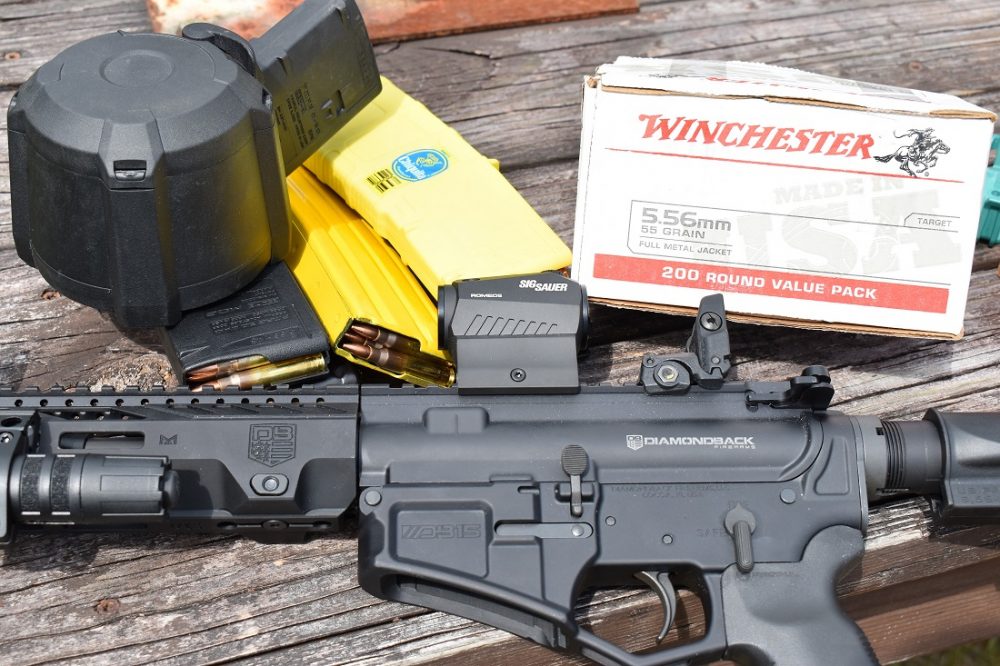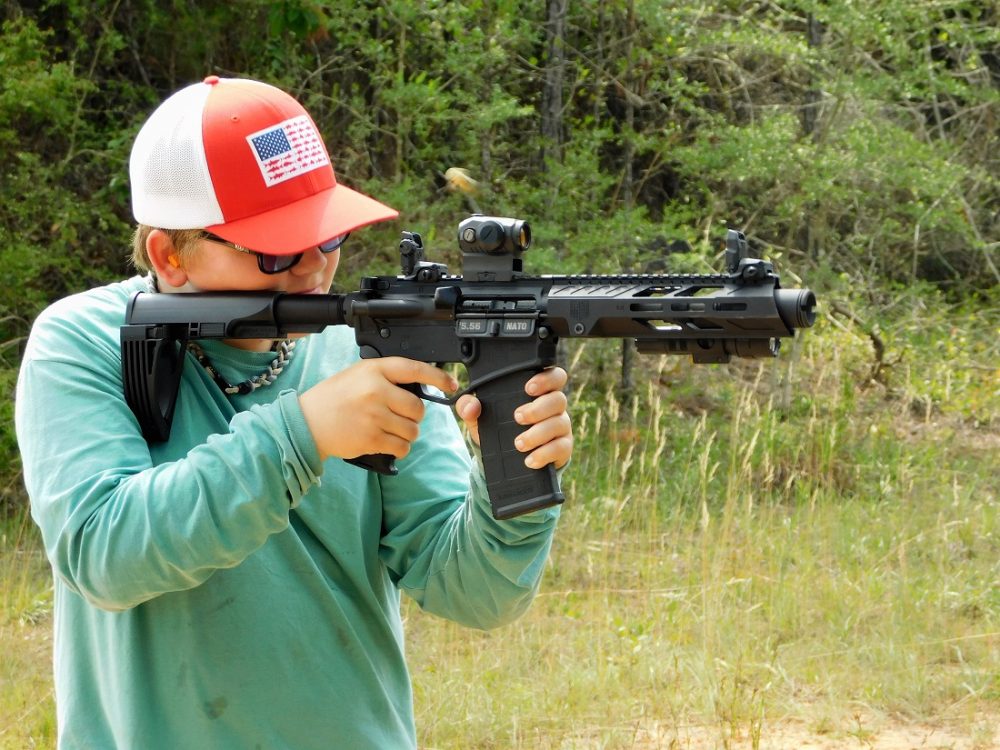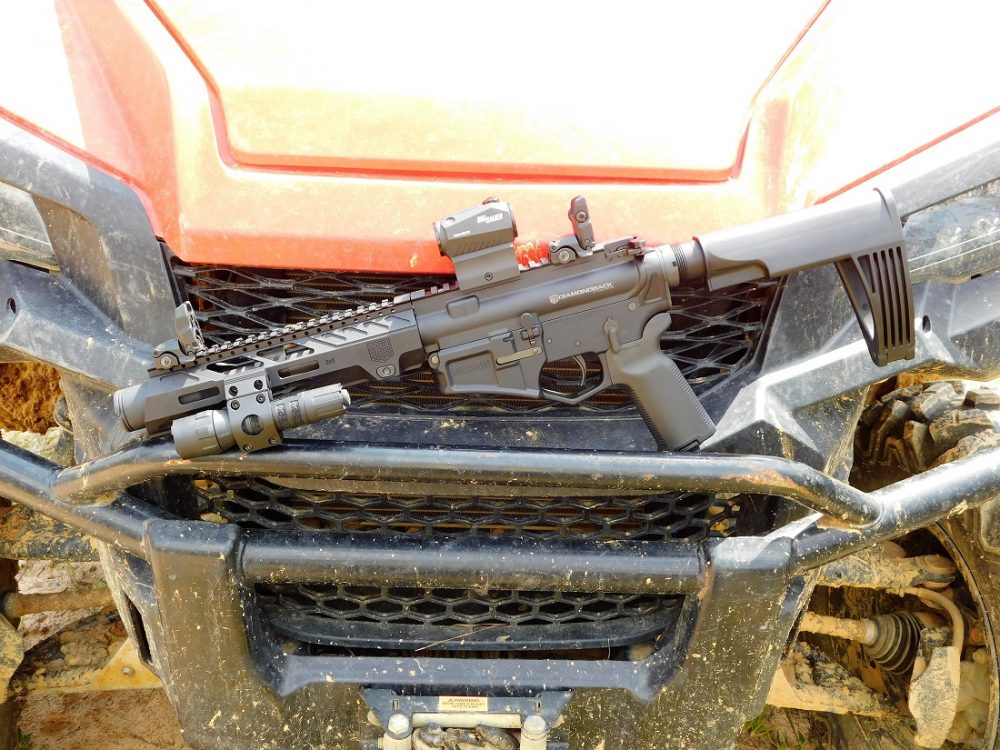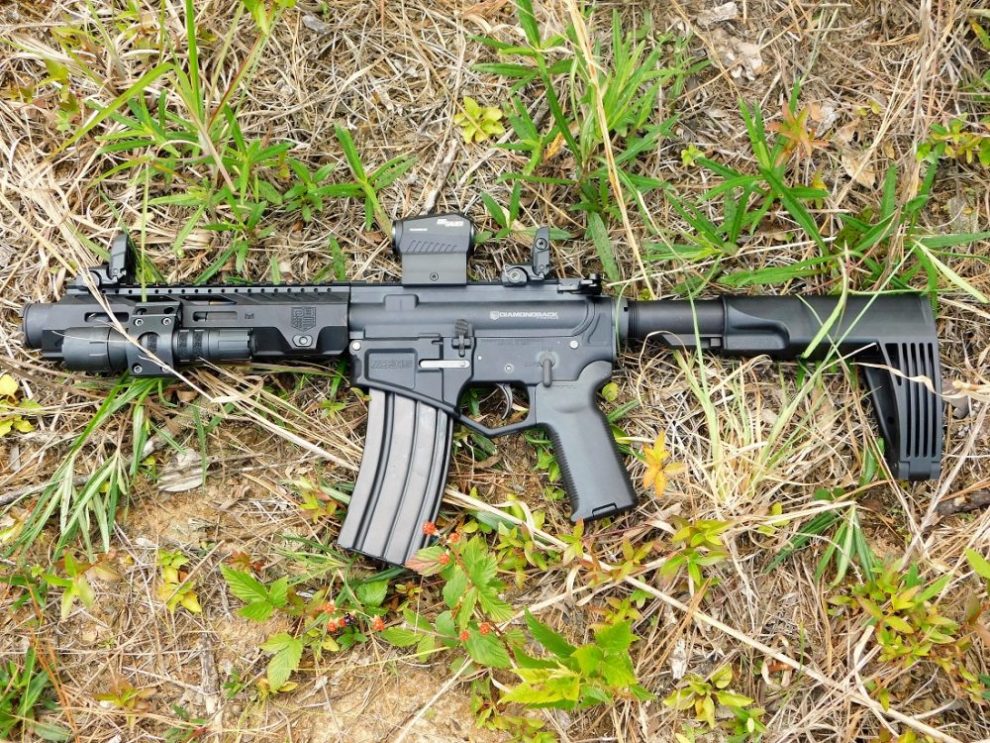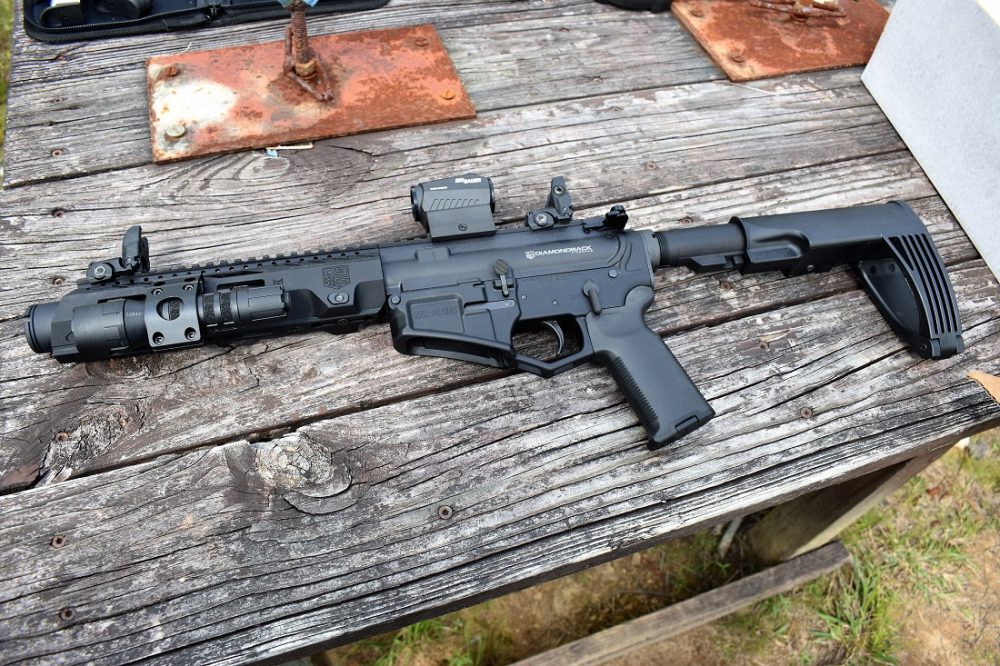
In the past couple of weeks, we have put a Diamondback DB15 pistol through its paces and it has delivered. (All Photos: Chris Eger/Guns.com)
We have been kicking around a Diamondback DB15 AR-pattern pistol for the past several weeks and have a report from the field.
Our test model, specifically a 7-inch barreled DB15PDS7B pistol, included a Gearhead Works’ Tailhook Mod 2 brace, which Diamondback seems to be switching to exclusively on their handgun builds. Using 7075-T6 aluminum receivers, this DB15 pistol is chambered in 5.56 NATO (the company also offers 7.62x39mm variants) and uses a heavy 4150 Chrome Moly barrel with 1-in-8 RH rifling.
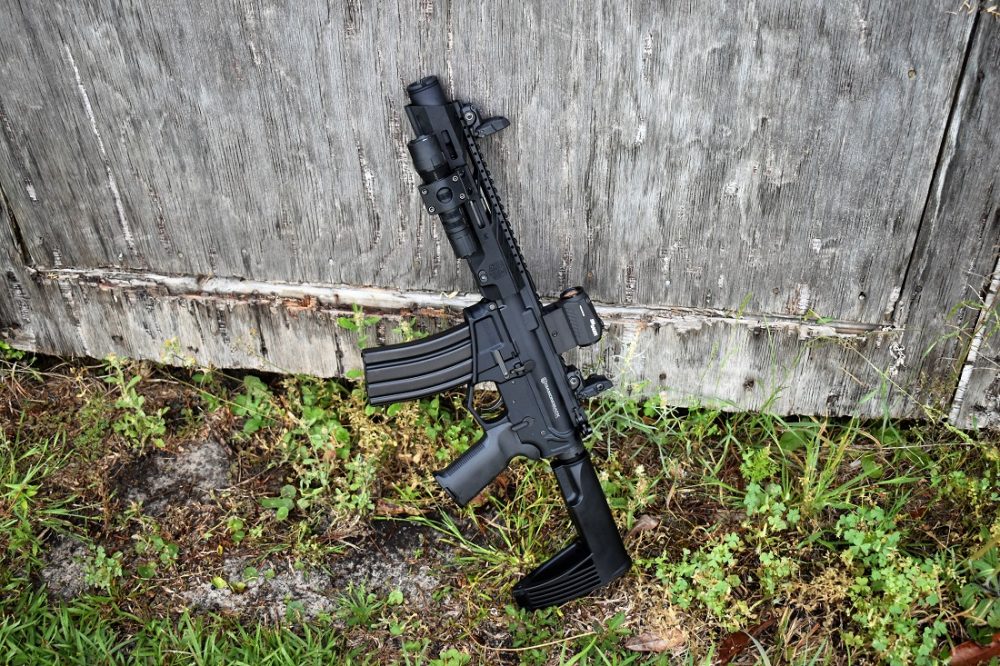
The DB15 ships with a single Magpul PMAG, but we found that it ran STANAG aluminum jobs as well with no hiccups
It also comes standard with a KAK Industry 1/2-28TPI Flash Can muzzle device– another feature increasingly standard on Diamondback’s new DB15 pistol line.
The gun is handy, being a very compact 23-inches overall with the brace compacted and weighs in at 4.53-pounds, unloaded, with a set of Magpul MBUS sights installed.
Related: Initial Look at the Diamondback DB15 Pistol, Inside and Out
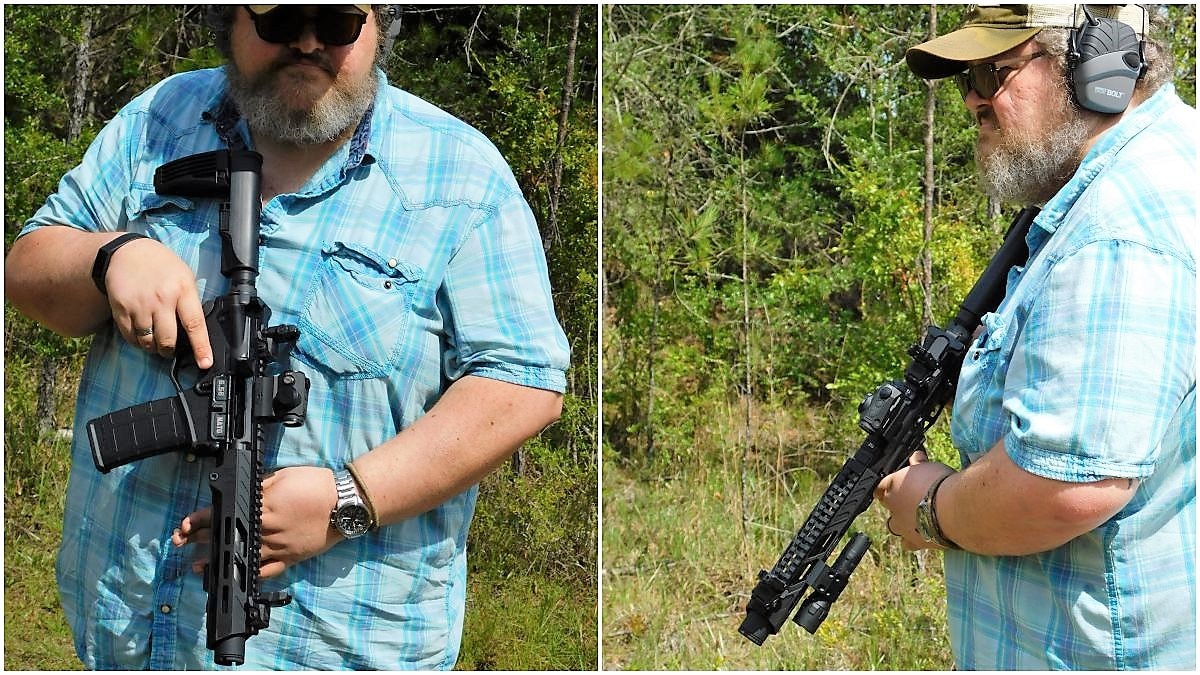
Shown with sights, a loaded 30-round PMAG inserted, Streamlight 88850 PolyTac, and Romeo 5 red dot, weight is still well under 7-pounds. Muffs are Howard Leight Bolts. Body by Dewars.
Functionality
Throughout a few range visits, we ran 500 rounds through the DB15 using both aluminum (D&H) and polymer (Magpul) magazines.
While some imported fodder from Wolf Poly and Tula steel case was tested for the sake of confirming the Diamondback would feed that stuff, most of what we shot (400 out of 500 rounds) was good old American-made Winchester 5.56 NATO in 55-grain.
How many jams were logged across 500 rounds? Zero.
The below video, typical of how the DB15 handled in initial testing, shows 60 rounds of mixed 5.56 ball at work from an older Magpul PMAG D60 drum. No jams. Bolt locked back on empty. No issues. Also, note the limited muzzle flash from the KAK device. The felt blast, while noticeably more than from a rifle with a 20-inch barrel, is not overpowering.
Ergonomics
In the past several years, pistol braces have evolved considerably. From the original SB Tactical braces, which blazed a path, to Shockwave Blades, they have become more commonplace on AR and AK pistol builds. The Gearhead Works’ Tailhook Mod 2 brace that came standard with the DB15 pistol was very solid and when used with the hook design around the forearm, allowing the pistol to be fired effectively with a single outstretched arm.
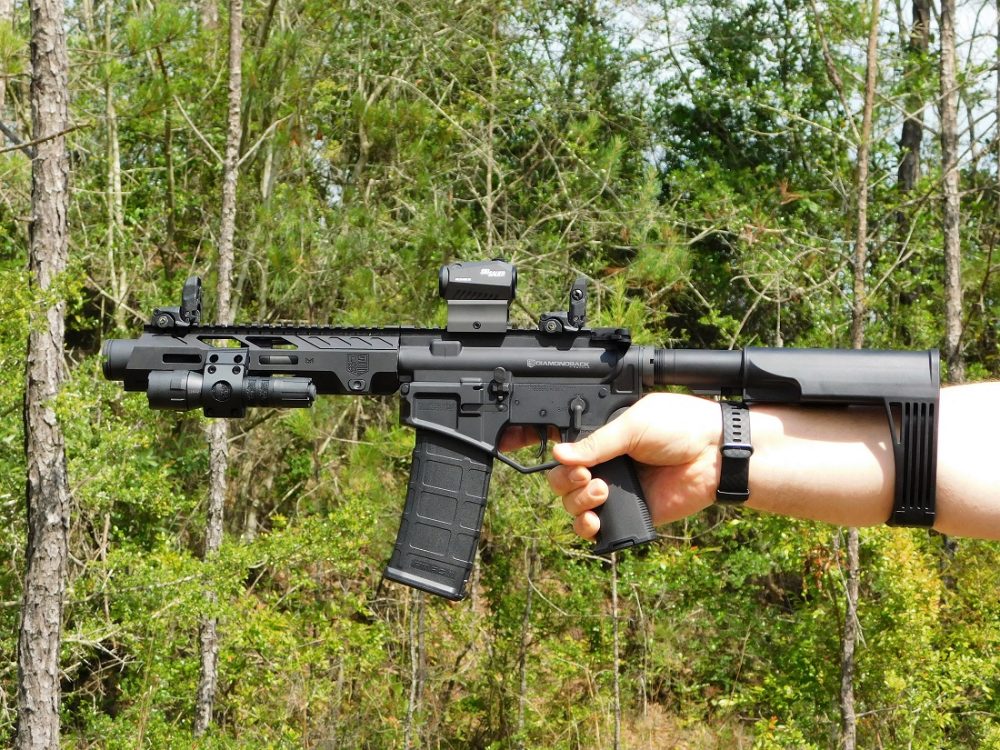
We had no problem placing rounds on target like this out to 50 yards through the combination of the standard GW Tailhook and Magpul MOE-K2+ grip combo that came with the pistol.
The surface controls on the DB15 were standard AR-style controls and worked as expected.
As the 5.56 NATO round is typically used with carbine-length barrels, the light off of unburnt power that remains at the muzzle leads to higher bore pressures on short-barreled 5.56 platforms, often producing a serious, sometimes dramatic flash and serious muzzle blast levels. The KAC Flash Can alleviated this to some extent. Even so, blast from shooting such pistols while in a prone position in sand or gravel could produce a mini dust devil. For those looking to swap out the device or use a suppressor, the DB15’s barrel has standard 1/2-28TPI threads.
Performance
It is not rocket science. Longer barrels give you more complete propellant combustion which translates to more velocity imparted to the projectile. The more velo, the more energy is carried by the projectile on the impact and the higher ballistic performance. In short, whittle the barrel down and you sacrifice some performance. By way of thinking, the optimal performance for NATO 5.56mm ball, such as M855, is wrung through a 20-inch barrel.
With that in mind, we wanted to check and see just how much velocity we dumped by running a 7-inch barrel.
For reference, the Winchester 55-grain 5.56 NATO FMJ rounds we chose for the bulk of our reliability testing have a listed 3,270 fps muzzle velocity generating 1,305 ft./lbs. muzzle energy. We found that, out of the 7-inch DB15, an average across five rounds hit closer to 2,240 fps, which, using the standard bullet energy formula, translates to something like 619 ft./lbs., or a loss of about a third of its velo and half of its energy.
How effective is that? Well, in 10% gel, the FBI recommends 12-to-18 inches of penetration to be considered an effective self-defense round. In our tests with a 16-inch block of Clear Ballistics 10% gel, we found that every round of a 7-shot test string of Winchester 55-grain FMJ penetrated the entire block and left a significant channel in its wake. Food for thought.
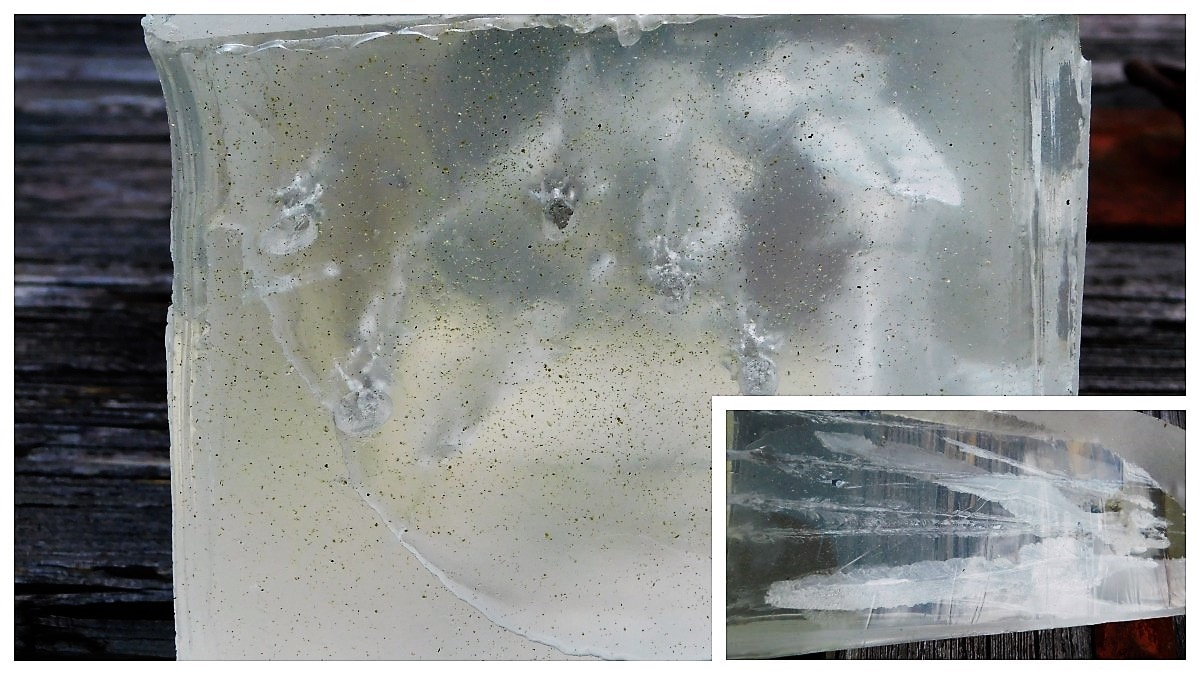
We have a riddled gel block to show for our work but were not able to capture any spent rounds as they all penetrated both sides of the block.
Keep in mind that there are several recently introduced SBR soft-point loads in 5.56 which are optimized to rapidly expand when used from pistol-length AR platforms.
How much does the DB15 pistol cost? MSRP, as shown sans optics and light, is $889 although pricing at retailers is typically a good bit less, down into the high $700ish range. For comparison when it comes to “deals” this stacks up rather good against the competition. About the least expensive PSA AR-15 pistols run about $500 but they use a cheaper Shockwave Blade or SB Brace on a fixed tube rather than the adjustable Tailhook and likewise usually lack the KAK Flash Can, backup sights and M-LOK handguard.
We plan to do some extended evaluations to include accuracy testing, and gel testing at extended ranges with barriers, so stay tuned for those articles in the coming days. As the man says, watch this space.
SEE GREAT PRICES ON DB15 PISTOLS & RIFLES
The post Gun Review: Diamondback DB15 Pistol After 500 Rounds & Some Gel appeared first on Guns.com.

